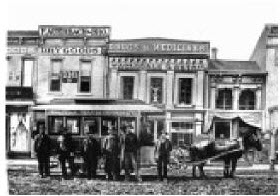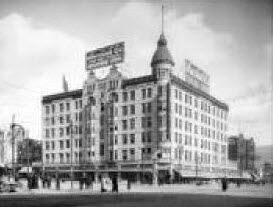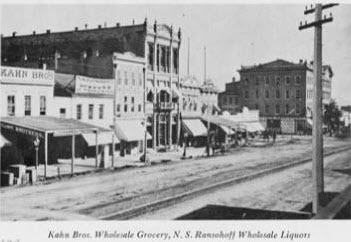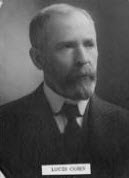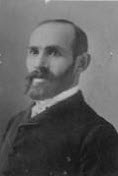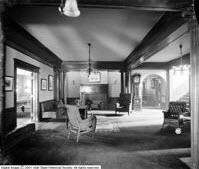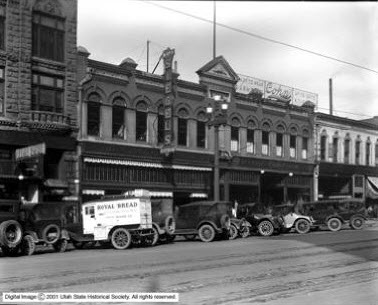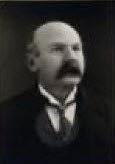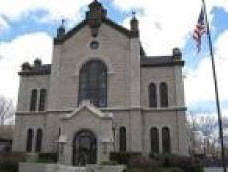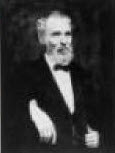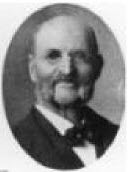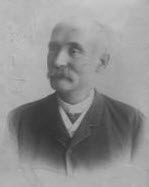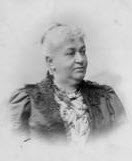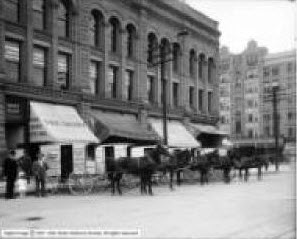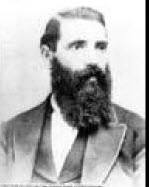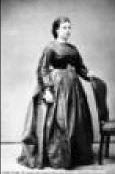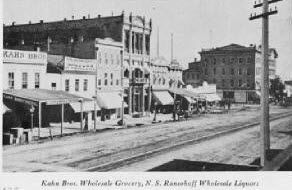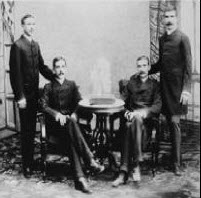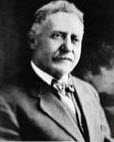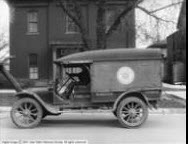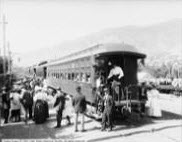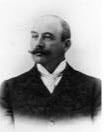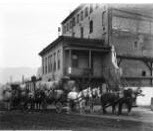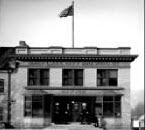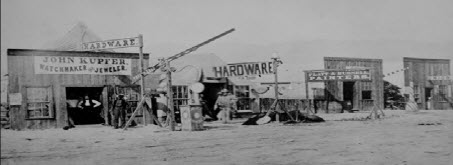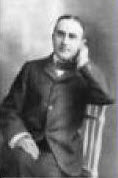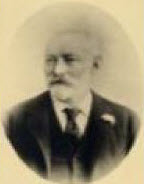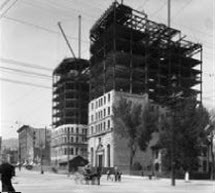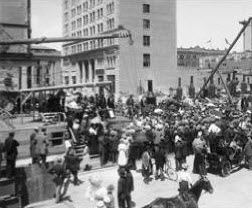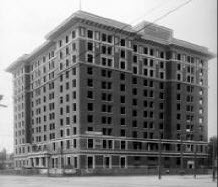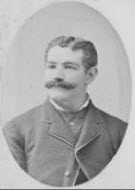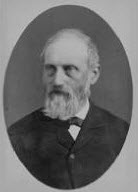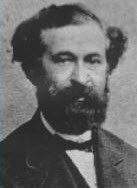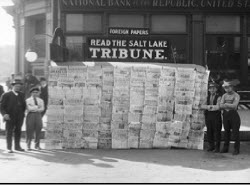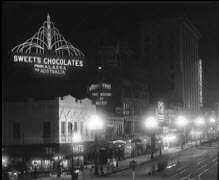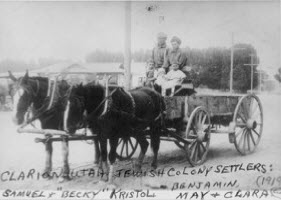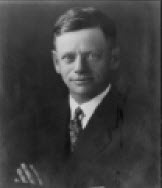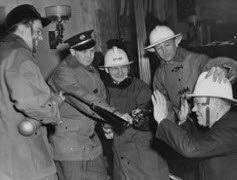Utah's Jewish History - by Rochelle KaplanThe Earliest Utah JewsJews in Utah in 2012 numbered about 5600, not much different from its population in 1899 of 5000, but Jews have been in Utah since the 1850s.
Among the first Jews to spend time in Utah was South Carolina-born Solomon Nunes Carvalho, who, as the official photographer and artist, accompanied Colonel John Fremont on his 1853-1854 expedition from Missouri across the Rocky Mountains. 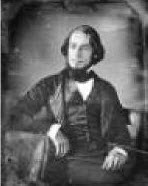 A fire later destroyed most of Carvalho's plates and prints, but his journal chronicles the trip. Fremont's group, exhausted after a winter in the Wasatch Mountains (which you can view from downtown), stumbled into the Mormon community of Parowan, where residents nursed Carvalho back to health. The artist then traveled to Salt Lake City where he befriended and painted portraits of Brigham Young and other prominent citizens. In 1857, he accompanied Brigham Young on a peace mission and painted Native American leaders such as Wakara. Carvalho only hints at his Judaism in his journal about the Fremont expedition, describing a porcupine with its quills burned off, looking much like pork, revolting Solomon, who sat hungry, looking at his comrades enjoying it. Carvalho later lived in NYC, with two businesses, one for photography and the other for steam-heating systems, for which he held several patents. He was a founder of the Hebrew Benevolent Society of Los Angeles and helped establish a Sephardic congregation, Beit Israel, in Baltimore. 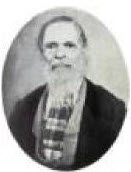 An early former Jew, Alexander Neibaur, trained as a Rabbi and dentist, converted to Mormonism in England, and was on the first ship carrying Mormons to the US in 1841. He taught Joseph Smith Hebrew and German in to Nauvoo, Illinois, was in the battle of Nauvoo, and was driven out by the mob in September 1846. He joined Brigham Young's camp to travel to Utah, arriving in September 1948. An article dealing with the early history of medicine in Utah also contains an account of Mr. Neibaur as a pioneer dentist in this area. Perhaps spurred on by Carvalho's account and those of other pioneers, Jews migrated west. Lured by adventure, religious and personal freedom, and economic opportunity, some people traveled overland from Independence, MO across the plains, among them Julius and Fanny Brooks, the Ransohoff brothers, the Kuhn brothers, Gumpert Goldberg and Meyer Cohn. Others took ships south around the Atlantic Coast, around Cape Horn to the Pacific Ocean, and then north to San Francisco, before heading inland to Utah; these included Abraham Watters, Aaron Greenewald and Charles Popper. Still others traveled south along the Atlantic to Panama, trekked across the jungle to the Pacific, and booked passage to San Francisco. There they joined wagon trains headed to Utah. Among this group were the Auerbach brothers, Moses Hirschman and Ichel Watters. Jews lived all over Utah then- in Alta, Bingham, Brigham City, Castledale, Corinne, Echo, Eureka, Gunnison, Logan, Ogden, Ophir, Park City, Provo, Richfield, Salt Lake City, Silver City, Silver Reef, Tooele and Vernal. Because Brigham Young long felt that the only suitable vocation for Mormons was agriculture, business opportunities opened for Jews and other Gentiles (non-Mormons). A February 1865 article in The Hebrew mentioned twenty Jewish men and two families living in Salt Lake City, who did good business there and closed their stores for the High Holidays. Later that year, Jewish business leaders in town called for a meeting of Israelites and soon thereafter bought prayer books, a Torah and Talisim. Brigham Young offered a hall gratis for religious services. On the High Holy Days that year, 50 Jews attended services, including some from Bozeman, in Montana Territory. That fall, seven Jewish families lived in SLC. The first formal congregation was established in 1873, but the articles of incorporation of B'nai Israel were filed in 1881, an early synagogue built in 1883 and a new synagogue was dedicated in 1891, on Fourth East, operating as a reform shul. 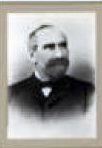
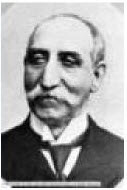 The first wave of Jews came from Prussia and Germany. The Auerbach brothers, Frederick, Samuel and Theodore, established dry goods and clothing stores in California's mining towns and then moved to Great Salt Lake City in 1863. Auerbach, aided by Brigham Young, found a store location and then expanded operations to Corinne and Ogden. By 1883, the Auerbach brothers' outlets reached $500,000 in sales and real estate.
The SLC department store, one of the largest in the West, closed in 1977. Beatrice Fox Auerbach, herself the granddaughter of the founder of a successful dry goods firm, married Samuel's son, George. From 1938 to 1965, she became president of the Fox Department Store in Hartford, CT, introduced a number of retail innovations and grew the business into the largest privately-held store in the country. She also instituted important labor reforms, such as a 40-hour, 5-day work week, retirement plans, and advancement opportunities for African-Americans. Also Prussian-born, the Ransohoff brothers, set up shop in SLC in 1858. Nicholas belonged to Utah's first Masonic Lodge, based at Camp Floyd. He lent Brigham Young $30,000 to buy the camp's entire pork supply when the US Army left in 1864. He was one of the first to freight goods across the Plains from the East. And he helped found Congregation B'nai Israel, Utah's first synagogue, and the Liberal Party. At their height, The Ransohoffs had stores in SLC, Ogden and Corinne. In the 1880 census, N.S. Ransohoff is listed as a liquor dealer; his sons were born in PA. Leopold Ransohoff, N.S.'s son, in 1900, was a partner in a lace house in SLC.
N.S.'s brother, also named Leopold, founded San Francisco's esteemed Ransohoff Department Store, featured in Hitchcock's classic film, Vertigo. Another liquor dealer in Salt Lake City (and later dry goods merchant) was Nelson Boukofsky, whose tallis is now in the LDS Museum.  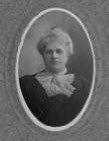 Bohemian-born Charles Popper is listed on the 1860 Placer, CA Census as having $200. Ten years later, in SLC, Popper is a butcher, married with 2 servants and assets of $30,000. In 1865, he organized Utah Lodge #1, of the Independent Order of Odd Fellows, a fraternal organization. (The IOOF Building, built in 1891, was moved in 2009 to 26 Market Street, across the street from where it had stood.)
Popper's name lives on in Popperton Park, located where his animal stockyards once stood. Popper was Utah 's first Jewish rancher, with vast holdings on the
UT-CO border. He supplied beef to Federal troops stationed in Utah, at
9 3/4 cents a pound. When he closed his shop on High Holy Days, the Mormon butchers
closed their shops out of respect for him; he reciprocated by closing
his shop on Pioneer Day. During the winter season, the shop dressed its meats, whole
carcasses of deer and bear, decorating them with ribbons of colored
paper. An 1879 article in American Israelite cites Popper as the most
influential Jew in Utah Territory, when there were between 30-40 Jewish
families. On the 150 acres of land he squatted on outside the city,
Popper built a slaughterhouse and soap and candle factory. The general at Camp Douglas appropriated Popper 's land but he fought back. He lost two rounds in the general lands office and his appeal to the Secretary of the Interior. But he persevered, bolstered by his development of an Idaho mine that paid him $60,000 a month. He moved his family to DC and laid siege to Congress for 11 years, regaining title to the UT land by a special congressional act! Later moving his family to NYC, he and business partners devised a plan to build an entertainment/hotel complex in Chesapeake Beach, MD and develop a railroad to take folks there. Popper became the mayor of Chesapeake Beach and owned much of the boardwalks ' features, including the carousel. The resort failed during the Depression, long after Popper died, but ironically is again a resort. Popper visited SLC in 1906, as he did almost each year, and
reminisced in an article about Main Street being the common race track,
with Brigham Young and his wives taking great interest. Like other
mining towns, SLC was raucous, with drinking, gambling, chewing tobacco, spitting and smoking, and fast women. Moonshiners made 'Valleytan' whiskey, which was 90% alcohol. Valleytan was also the nickname of Brigham Young 's signed paper currency, because it too was homemade. Popper died in NYC in 1909, surrounded by his 5 children, but in 1906 he told his SLC friends, he'd always be a Utah resident, have been since 1864. My heart and interests are here and always will be. The 1870 Census shows Polish-born Louis Cohn, 29, a retail merchant with his brother Alexander, owning a home worth $18,000. He was elected to the city council in 1874 and re-elected in 1882; he also served as fire and police commissioner, was a member of the Alta Club (still going strong) and an active Mason. Alexander was elected President of Congregation B'nai Israel in 1896. He and his brother married two Lippman sisters.
The Siegel brothers, born in Bavaria, owned two clothing stores in SLC by 1866. Before that, they had followed the railroad west, selling goods in the Dakotas and Montana Territory. Henry, the eldest, was an incorporator of B'nai Israel and its first president. A 1896 article in the Salt Lake Tribune mentions Henry Siegel, clothier, being the locator of the Mercur Mine in 1871, and worked it for its mercury. Joseph was one of four signers of an 1866 appeal in the Jewish newspaper, Occident, circulated in Eastern states, asking for help establishing a Jewish cemetery for SLC. Sol Siegel, 20 in 1870, was a clothing merchant who owned an estate worth fifteen grand.
Another set of
Prussian-born brothers, the Watters, were jewelers who went first to
California. Two of three brothers, Ichel and Abraham moved to Utah. They were active Masons and Odd Fellows. Other Jewish Odd Fellows
were Fred and Theodore Auerbach, James Ellis, Nelson Boukofsky, Simon
Bamberger, Henry Cohn, Louis Hyams (Salt Lake City recorder), Samuel
Levy, Elias Siegel and Moss Wolf. The current Salt Lake City mayor, Ralph Becker, who is not Jewish, is a descendant of Ichel Watters. Ichel served as treasurer of the Hebrew Benevolent Society, established in 1866; his wife Augusta was President of the Ladies' Hebrew Benevolent Society. Ichel was a charter member of B'nai Israel and often led services there with Moses Caspar Phillips, who like Ichel went to CA and then to UT. (A plaque outside the Peery Hotel downtown notes the site of B'nai Israel Congregation). Abraham Watters divided his time between UT and CA, and was actively involved in the Jewish community in both states. Ichel in 1880 was a stockbroker. His son Leon became a celebrated scientist, professor and writer of Jewish history (The Pioneer Jews of Utah), and was friends with Albert Einstein. His inventions helped in both WWI and WWI. An endowed chemistry prize in his name is awarded annually at the University of Utah.
Julius Gerson and Fanny Brooks (nee Bruck), born in Silesia, are reported as being the first Jewish family to settle in Utah, arriving in 1854 but settling down in 1857. Julius was Fanny's uncle. The family took in boarders, owned a millinery shop and real estate. Eveline Brooks Auerbach, a daughter, built the Brooks Arcade, a stately building which survives downtown. Eveline wed Samuel Auerbach.
Another set of brothers, Samuel and Emanuel Kahn (pronounced Kane), settled in SLC where they wed two daughters of Briner Cohen, while Louis, their sibling, remained in Philadelphia. Samuel became a partner in Ransohoff and Co, and later joined George Bodenberg in a grocery distribution firm active in UT, ID and MT. He later joined forces with his brother Samuel in the grocery distribution business. Samuel was appointed to the Governor's staff, and was a financial backer of Peep o'Day, perhaps the first magazine published west of the Mississippi. Active in civic affairs and in B'nai Israel, The American Israelite, in 1885 published a long resolution of condolence on his death. Emanuel served as an officer of B'nai Israel. He raised $2500 to establish the Masonic Library in 1874, Utah's first non-Mormon library, open to the public.
The Simon brothers, Fred, Louis, Joseph and Adolph, were active in civic and religious affairs and leading manufacturers and wholesalers of millinery. Louis and Adolph established the fabulous Paris Millinery Store, while Joseph kept a wholesale dry goods business. The Ellis brothers also settled in the city and were active. They advertised dry goods in the Union Vedette in 1864. James was a charter member of the Masons and President of the Odd Fellows (1865). Nathan Ellis was president of the SLC Israelites (Telegraph, 1866) and signed a petition of prominent Jewish and other Gentile merchants to LDS leaders during difficult times between the two faiths in 1866. The 1880 Census lists Jacob Bamberger, in mining, and his family, and Jacob's brothers Simon and Louis. Simon later built railroads, public transportation and the Lagoon Amusement Park (still standing nearby but renovated). He served as a state senator and then Governor of Utah, during the Progressive Era.
Louis Reggel, in the Corinne Daily Record (1871), advertises
clothing, fancy dry goods, boots and shoes and general merchandise. His
firm was one of only two purchased for incorporation into the Mormon
ZCMI; the other was Ransohoff.
Isidor Morris, Russian-born and a civil war veteran, and his family lived in the city. His wife, Annie, converted from Mormonism to Judaism. A grocer, lawyer and miner, he contributed gold dust to help raise funds for the city's second synagogue, the conservative Congregation Montefiore, whose members were disgruntled former members of the reform B'nai Israel. Because he helped free convicted polygamists, he was loved by Mormons, whose leaders donated funds for Montefiore's construction. In 1903, LDS President Joseph Smith gave a dedicatory address. A prominent brewer, German-born Jacob Moritz, founded the Salt Lake Brewing Company which supplied the intermountain west with the good, wholesome beverage, beer. He had earlier worked for the Schaefer Brewing Co in NY and the Anheiser¬Busch Brewing Co. in St. Louis, before heading further west.
Moritz served a term in the state legislature, was a member of the Constitutional Convention, a director of a mine, president of B'nai Israel, and member of the Alta Club and Liberal Party. He chaired committees to advance Utah's mining industry, and raised money to build the first Salt Palace. When he died in 1910, his estate was appraised at $327,000 (in today's purchasing dollars, about $8 million). His wife, Lahela (Hawaiian for Rachel), was the first Jewish woman born in Hawaii; she remarried to Joseph Lippman, a widowed attorney in SLC, also active in the Liberal Party.
The Baer brothers were wholesale liquor distributors who began their business in Leadville, CO before moving to SLC. They were founding members of B'nai Brith in Leadville, officers of the Hebrew Benevolent Society there and helped build Temple Israel. Alexander Stiefel, a drayman born in Germany, was a founding member of B'nai Israel in 1881. He officiated with Ichel Watters and Moses Phillips at the synagogue's first service in 1883 where he blew the shofar. He was the resident shofar blower for years afterward. He was also an Odd Fellow. When he died in 1904, the Deseret News ran a front page story on his life. Corinne: Gentile Capital of UtahCorinne, now a small rural community, from March 1869 to 1880, was the Gentile capital of Utah. As the Union Pacific and Central Pacific railroads approached their meeting place at Promontory Summit in Utah, to complete the Transcontinental Railroad, a group of former Union army officers and non-Mormon merchants founded a community, due north of SLC, believing it could compete economically and politically with the Latter Day Saints. Known as the Burg on the Bear (River), Connor (for a Union General) and Bear River, it eventually became Corinne, after the daughter of a founder, General Williamson. Corinne would be the transfer point for shipping goods and supplies to the mining towns of western Montana, along the Montana Trail.
By May 1869, Corinne was home to 1000, none Mormon, and it became Utah's second largest city, with over 500 buildings including 28 saloons, 24 gambling houses, 16 liquor stores, houses of prostitution, commission and supply houses, a cigar factory, a flour mill, a brickyard, hotels, two theaters, an opera house, five newspapers and a town marshal to try to keep order. A tract was set aside for what town leaders hoped would become a state university. Corinne's wealth and population gave it power and the American Liberal Party, comprised of non-Mormons and ex- Mormon Godbeites set up shop there.
A plan to install Williamson as territorial governor also failed. I believe these efforts fizzled in part because the Mormon-dominated Territorial Legislature awarded voting rights to the territory's women, ensuring that Mormon voters outnumbered Gentile ones. This right of suffrage was revoked, in 1887, by the U.S. Congress. Women's suffrage, while progressive, was designed to maintain Mormon supremacy in the territory.
The Mormons, determined to maintain power, and consolidate the northern Utah Mormon settlements and provide a market for their products, proposed a narrow-gauge railroad connecting Brigham City with Ogden, Logan and Franklin, ID. By 1874 the Utah Northern RR was completed, cutting off Corinne as a link for the shipment of goods to Montana.
Ogden JewsOgden lies between Corinne and Salt Lake City and remains home to Utah's oldest operating synagogue, Brith Sholem (1916), although it has no rabbi. Prominent early Ogden Jews included Fred Kiesel, merchant born in Wurtenburg, who was elected mayor in 1889 and later donated land for an Ogden school and a park in ID. Other Jewish citizen salesmen and merchants of Ogden in the 1870 Census were: L. Levy, Samuel Auerbach, William Cohen, J. Plonsky, D. and Julius Mendelsohn, Lewis Gross, Jacob Levi, H. Cohn and other Auerbachs- hailing variously from Prussia, Germany and Russia, and with children born in California, Montana and Utah. Ogden was also home to Ad and Abraham Kuhn, perhaps its most famous Jewish inhabitants, cousins of the banking Kuhns of NYC. Abe Kuhn, on his 90th birthday, and still working, purchasing hides
in the winter and selling them in other seasons, told of his adventures
to the Ogden Standard Examiner in 1927. Born in Bavaria, he came to New Orleans at fifteen and settled in Ogden in 1865 after 16 years out west. When he heard of the CO gold fields, he headed west with his brother, rigging up a wagon and supplies. In the 1860s, he operated two mercantile stores in Denver but would also buy gold dust in Montana and sell it in Denver. Loaded with the precious dust, the two brothers, after months in Montana, took stage to Denver, acting the part of penniless travelers to avert any suspicion of their riches. More than once they went without food and begged 50 cents of fellow travelers for victuals. They paid the highest price for dust in Montana, $17.75 an ounce, and sold it for $40 an ounce in Denver. Mining MagnatesMining began in earnest in Utah in 1870, prompting a new wave of settlers. Jews such as Charles Popper and Samuel Newhouse, moved from respectively CA and CO, to become involved in mining and other businesses. Fred Auerbach noted that Auerbach's Store had been economically threatened by ZCMI, and survived because of the new mining industry and the business it brought. By the 1880s, miners became capitalists, engaged in mining, smelting or becoming bankers and suppliers of services and equipment. A founding group established the Alta Club in 1883 (it still functions today as a social business hub in downtown), modeled on the Union Club of San Francisco. Among the Jewish organizers were Fred Auerbach and Abraham Hanauer, a smelter owner also involved in ranching. By the 1890s, other wealthy Jewish members included Jacob Bamberger (representative of the Guggenheim mining and smelting family, later known for collecting art) and Simon Bamberger, and Hartwig Cohen, grandson of a SC rabbi. Simon Guggenheim and Newhouse were colorful Alta Club members and philanthropists, although Simon never lived in Utah. When Simon Guggenheim wed in NYC, the Guggenheims provided Thanksgiving dinner to 5000 poor Manhattan children. In 1907, Guggenheim was elected a Colorado Senator. Afterwards, he moved to NY and joined the ASARCO board and became its president. Simon began the Guggenheim Fellowships that exist to this day.
Newhouse is the father of copper mining in Utah. President of the
Denver, Lakewood and Golden RR, Boston Consolidated Mining Company,
Newhouse Mining Company, Newhouse Mines and Smelters and Nipissing
Silver Mines Company, he controlled the Highland Boy Mine in Bingham
Canyon, UT. Newhouse built Utah's first skyscrapers, The Boston and
Newhouse Buildings (still standing), donated land for the Commercial
Building and the Stock Exchange Building with the intent of building an
alternative business district to that dominated by Mormons.
Henry Siegel, first president of B'nai Israel, managed the Siegel Consolidated Mining Company. The Bamberger family was involved in coal mining and owned the Bamberger Coal Company before branching out into transportation. Jacob Bamberger controlled the Daly West Mine and when he retired, his sons took the reins. H. A. Van Praag was a wool dealer and mining capitalist, member of the Alta Club and B'nai Israel. Charles Popper, already discussed, discovered and developed the Queen of the Hills Mine in ID. M.S. Ascheim developed Park City's first smelter, and had a mercantile store there. Moses Hirschman, born in Werttemberg, Germany, then moved to W. VA, CA, NV, MT and finally to SLC in 1871. He was involved in several UT silver and lead mines and owned a shoe store in SLC.
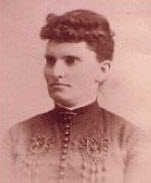 Anna Rich Marks was born in Russia Poland, went to England and there married Wolff Marks. After living in NYC, they traveled to SLC and opened a store. In 1880, they moved to Eureka in the rich Tintic mining area. A historian recalls: In Tintic's early days, two men claimed the land near Pinion Canyon, placing a toll gate in the narrow part. Anna was in the lead in a buggy followed by many wagons loaded with everything necessary to open a store. She refused to pay the toll. A verbal war ensued, the air turning blue with Anna's cuss words. She summoned her bodyguard and with guns drawn, they tore down the toll gate and went on to Eureka. She was soon in business. When Pat Shay contested her right to the property, Anna first relied on cuss words and then she pulled her guns. He went flying and so did the bullets. From them on, no one crossed Anna Marks. Anna also carried on a historic battle with the Denver and Rio Grand, holding up the building of a railroad at gunpoint until the company met her price to cross the section of her land. 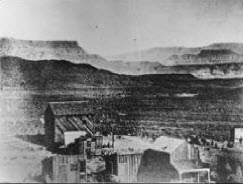 Other mining towns thrived throughout Utah, if briefly, during the boom years, among them Alta and Silver Reef, the latter unique because the silver intruded into a sandstone outcrop. Alta is now a ski resort and Silver Reef a ghost town. At its height, Silver Reef had 2000 residents and housed a hundred businesses, among them grocery stores, dry goods stores, restaurants, saloons, dance halls, drug stores, a bank, racetrack, billiard hall, brewery and Chinatown. It had a daily newspaper and a brass band. Jewish residents included Leopold Goldberg, Isaac Marks, Isador Schwartz, Abraham Levi, Moses and Simon Woolf and Simon Greenbaum. Six silver mines operated, averaging one million dollars per year in output. In 1879, a fire swept through town, silver prices dropped, labor disputes erupted and water flooded the mines. By 1890, only 177 inhabitants remained. Second and Third WavesThe second wave of Utah immigrants included poorer Russians and Eastern Europeans seeking new opportunities in America, those who had already come to America but sought an escape from eastern slums and some from other surrounding and western states, seeking new ventures. Among this group were the McGillis family, originally Margulies, whose descendents founded the McGillis School, a private school with Jewish roots. The family moved from Russia to Colorado, and then to SLC, where Charles got involved in newspaper distribution. His newspaper stand, which stood outside the Salt Lake Tribune Building, is now in the Smithsonian Institute.
Leon and Arthur Sweet moved their confectionary
operation from Oregon to Utah because of its sugar beet production.
This once robust industry became defunct as sugar cane came to
dominate. Beet sugar production was an important part of Utah's economy
for a century, beginning in the1880s, sponsored by LDS Church.
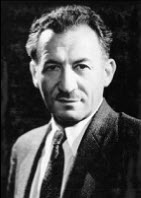 A group of Jews from Philadelphia and NY tried to establish a Jewish agricultural colony in Clarion, Utah (now a ghost town), a suburb of Gunnison, under the leadership of Benjamin Brown, nee Lipschitz, as part of a back to the land movement, in 1911. Articles in the NY Times detailed the experiment. Prominent Jews and the LDS Church in SLC gave financial aid
for the effort. But the problems mounted. Work on a promised canal to
bring water was slow. Sanpete County had only two Jewish merchants
among 17,000 people, and the colonists felt isolated culturally.
Secular and observant Jews in Clarion clashed over values and land.
They were mostly urban dwellers who lacked farming know-how and were
cursed by poor soil, a short growing season, snow, floods and drought.
Brown's leadership was tainted by an out of wedlock child and by his
refusal to help observant Jews maintain their traditions.
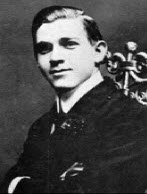 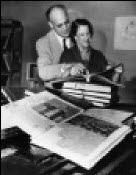
Nathan Rosenblatt came to the US at 14 from Russia, first going to Denver and then to SLC, where Fred Auerbach gave him a pushcart to sell items. Nathan would go to various mining towns like Alta and Park City; not wanting to come back with an empty cart, he started collecting scrap metal. This junk dealer in 1889 hosted Congregation Montefiore services in his home. With his sons Simon, Morris, and Joseph, Nathan bought mining machinery, opened an iron foundry and machinery business. By 1920, he was the proprietor of a steel mill and Simon was the manager of the iron foundry. Simon later ran American Foundry and Machine. Morris headed the Structural Steel and Forge Company and Joseph presided over the Eastern Iron and Metal Company, changing its name to EIMCO in the 1930s. Joseph, a lawyer, also helped found the James White Jewish
Community Center. EIMCO revitalized mining operations with its patents.
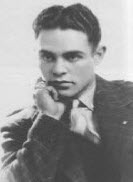 Izzy Wagner grew his parents' modest bag business into a mega
business and ultimately sold it. He then became a philanthropist but
had long been active in civic affairs, beautifying downtown. He joked
that his mother Rose, born in Latvia, retained her thick accent and on
the radio, when asked what she did, said she was in the sex (sacks)
business. He urged her to say bags instead.
Maurice Abravanel, for whom the symphony hall is named, was its long-time conductor. Born in Greece, Abravanel studied in Germany under Kurt Weill, conducted throughout Europe. At 33, he began conducting NYC's Metropolitan Opera. He conducted all of Weill's American productions on Broadway and won a Tony. An arts promoter, he brought ballet and opera to Utah. Synagogues and Jewish OrganizationsAlready mentioned are the first and second synagogues in SLC (B'nai Israel and Montefiore). The B'nai Israel synagogue was designed by Phillip Meyer, nephew to Fred Auerbach. Meyer returned to Germany and subsequently died in a concentration camp. Montefiore is now a Russian-Orthodox Church. A third synagogue, the short-lived Shaarey T'zedek, made up of more Orthodox, primarily Russian born Jews, existed from 1919 to 1932, at 833 S. Second East and Utah's Jewish Governor Bamberger laid the cornerstone. Shaarey T'zedek's members in 1932 then rejoined Montefiore. Disbanded in 1935, the Shaarey T'zedek building was later sold to VFW Post 409, which still occupies the bottom floor, while the architectural firm Dixon and Associates occupies the main floor. Each congregation had separate cemeteries. Brith Sholem in Ogden was organized as Ohab Shalom in 1890. High Holy Day religious services were held in the IOOF Hall on Grant Avenue, between 24th and 25th Streets. The congregation reformed in 1916 as Brith Sholem and later dedicated a synagogue at its present location on August 21, 1921. The congregations of Montefiore and B'nai Israel merged in 1972 to form Congregation Kol Ami, which is Utah's largest Jewish congregation, serving over 300 families, now housed not far from Mill Creek Canyon, on Heritage Way. Its current rabbi is Ilana Schwartzman. It's recently retired cantor, Lawrence Loeb, is also a professor of anthropology at the University of Utah. In Park City, in 1995, a group of Jews decided to form the Park City Jewish Center, and in 1999 reformed as Temple Har Shalom. A new building was dedicated in 2008. As to other Jewish organizations, the Hebrew Relief Society was established in 1865, B'nai Brith in 1892, the Jewish Community Center in 1923, the James White Jewish Community Center opened in 1959 and the Jeanne and Izzy Wagner JCC opened its spectacular doors in 2000, on the site of the Ft. Douglas Country Club which once barred Jews, and is open to all, Jews and non-Jews. The National Council of Jewish Women began here in 1941 and Hadassah in 1943. Hillel operates in Utah but the Sigma Alpha Mu fraternity at the University of Utah is long defunct. Jewish PoliticiansPolitical figures include Louis Hyams, SLC Recorder, Simon Bamberger, Utah governor and Fred Kiesel, Ogden mayor, all previously mentioned. Born in Brooklyn, NY, Louis Marcus was SLC Mayor from 1932-36 and died while in office. He refurbished the Orpheum Theater and renamed it the Capitol Theatre. He owned movie theaters in the Intermountain West, and was involved in real estate and banking. As mayor he was concerned about water conservation issues and government financial accountability. Sol Selvin, born in Lithuania, married Fannia Frank in 1904 and then moved to Murray, Utah, in 1908. He entered the clothing store business and earned enough to bring his family to Utah. He maintained his clothing store business until 1954. (Arthur Frank, Fannia's brother, owned two clothing stores). Throughout his life, Selvin served in various political and community capacities. He served in the Utah State Legislature and State Senate, was mayor of Tooele, was on the Tooele County Welfare Board, and was involved in many other civic concerns. Herbert Schiller was a district judge, Julian Bamberger, a state senator, Irwin Arnovitz, a state legislator, Patrice Arent, former state senator and current state house representative, David Litvak, former state legislator.
|
|||||||||||||||||||||||||||||||||||||||||||
